A Decadent New York Home That Feels Straight Out of ‘The Gilded Age’
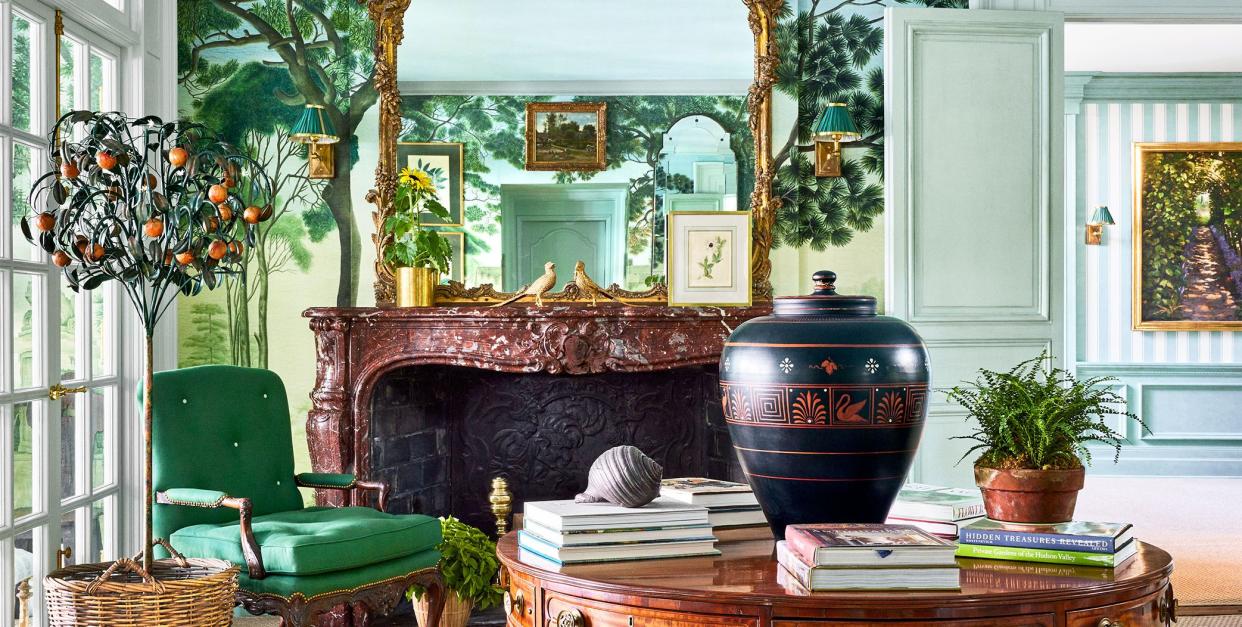
Great works of fiction—like well-appointed homes—tend to have an exciting twist or two, with characters and subplots to shock and awe. Designers Miles Redd and David Kaihoi of Redd Kaihoi know how to spin a good yarn. In a Shingle Style “cottage” north of New York City that they recently completed, the pair imagined an interior story that’s a must-read. There are glamorous, double-height rooms fit for Jay Gatsby, tucked-away corners perfectly suited for a midnight tryst, and regal bedrooms that pull you right back into the ancien régime. “The feeling of the house is dreamy and rambling,” Redd says. “There are grand rooms, but also all of these nooks and crannies, turrets, and moments.”
When the duo started work on the project in 2019, they received little in the way of a brief. “The clients just wanted to lighten up the house,” Kaihoi says. The homeowners, whom Redd Kaihoi had previously collaborated with on a Manhattan apartment, were hoping for an aesthetic that didn’t quite exist—something fresh and exciting, with a nod to the 19th-century robber-baron style. “The wife is an artist and has an amazing eye and collection,” Redd says. “She lets us be artists as well.”
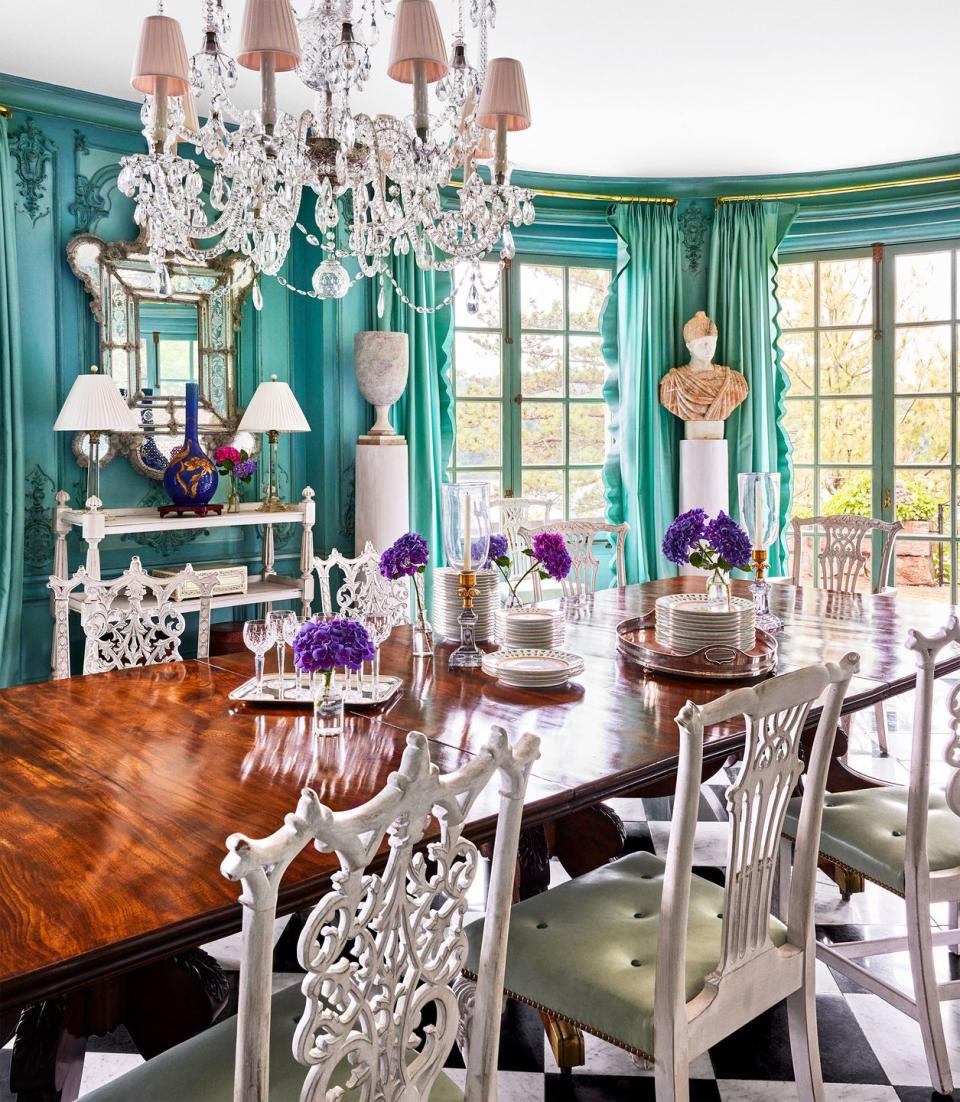
As you step down into a graciously proportioned living room, the heart of the house, unexpected interventions appear one by one, first among them a red-leather bed from the collection of the legendary American decorator Thomas Britt, right at home with pieces from the estates of David Adler, Kenneth Jay Lane, Lee Radziwill, and C.Z. Guest. The bed sits comfortably in the corner of the room with a pair of lacquered roosters hilariously perched atop it: “It’s a marvelous place for a nap,” Redd says with a laugh. Brown-lacquered walls make the immense room feel welcoming and intimate, while the salon-style walls give the impression of a space evolved over decades. “I’m in awe of their art of arrangement,” says the wife. In areas with less packed walls, a plethora of pattern keeps the eye entertained, with sumptuous chintzes and animal prints diverting guests where decor is more subdued.
The house went through two updates since it was originally built in 1895: one in the 1920s by Warren and Wetmore (the firm behind New York City’s Grand Central Terminal) and another in the 1990s. When Sarah Drake, the architect who collaborated with Redd Kaihoi, went over the home, it was with an eye to remove and refine. “We brought the house further back, versus forward,” Drake says. The floor plan remained the same, but materials were upgraded, grilles and finishings redone, poky windows removed, moldings added, mantels replaced, and so on. “Like choosing the right shoes for an outfit, it’s the small details that change everything,” she says.
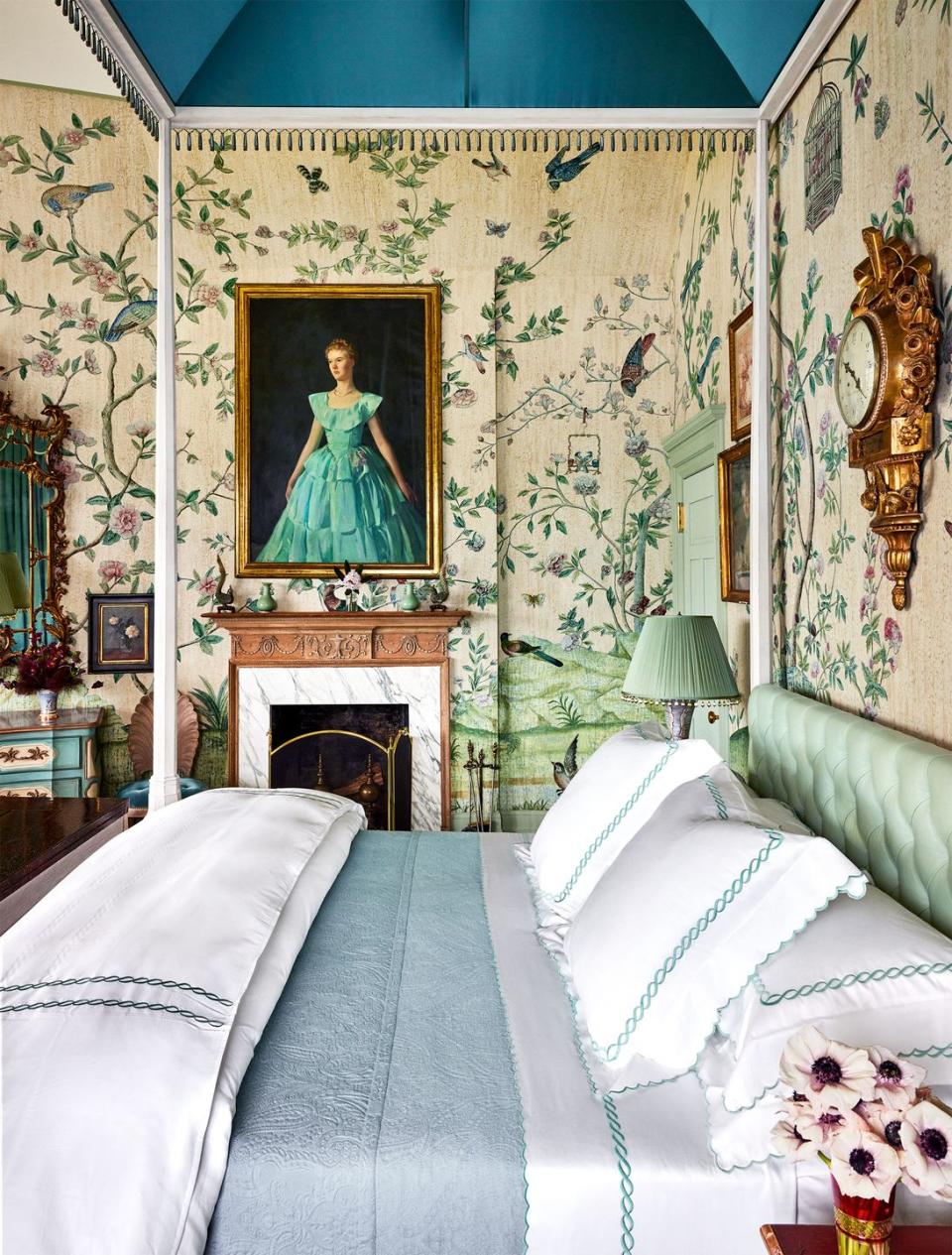
It was only once these fine points were nailed down that decorating could commence in earnest. Redd Kaihoi’s mission was to create a home that enveloped its owners and their guests in a feeling of ease and fantasy. For a house with such aesthetic range, its references were historically specific. The charm of New England’s Sleeper-McCann house, for instance—with its abundance of sitting areas, family rooms, canopies, and decked-out corners—informs the interiors; as at the iconic mansion in Gloucester, Massachusetts, which was built roughly a decade after this home, every surface is treated. Hand-block chinoiserie wallpapers cover several bedrooms, usually paired with a grand four-poster hung with matching or complementary textiles. Private areas are carved out for an afternoon read, a cup of tea, or a quick powder of the nose. In spaces for entertaining, the influence of Stanway House—the 17th-century estate in Gloucestershire, England—comes through in formal seating arrangements, scattered wingback chairs, and Jacobean furniture.
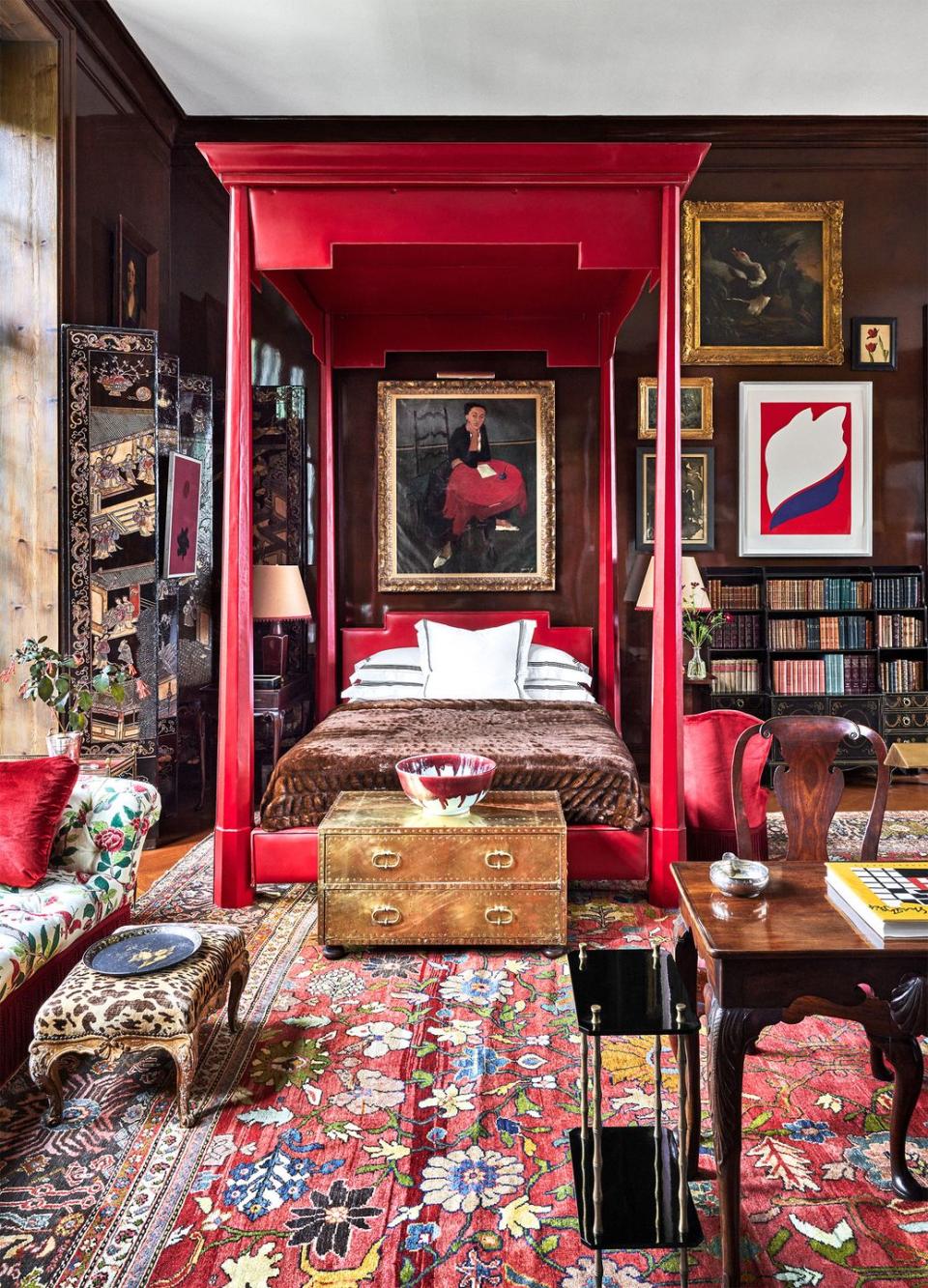
It’s a maximalist medley worthy of Edith Wharton, whose Lenox, Massachusetts, home, the Mount, was built in the same era and decorated in a similar style. And as far as fiction goes, Manderley, the haunted estate from Alfred Hitchcock’s 1940 film Rebecca, offered the designers several revelatory moments of inspiration. “I always think of a house like a movie set,” Redd says, and this one mimicked the graceful proportions of the imagined estate, albeit with less sinister undertones. In the end, Redd Kaihoi gave this house something its predecessors lacked: their signature brand of theatricality and humor. After all, as Redd puts it: “Rooms need to be dramatic to be interesting.”
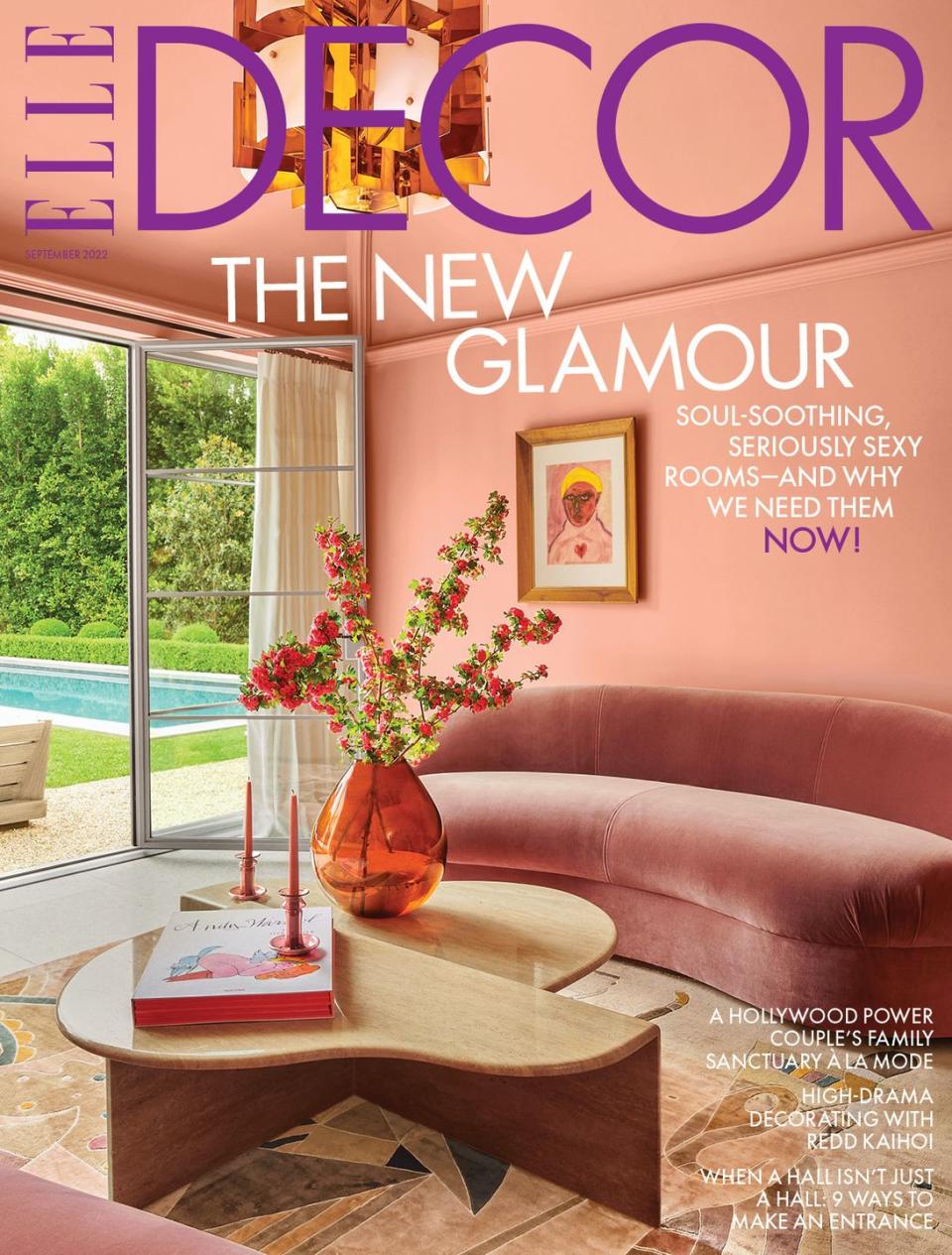
This story originally appeared in the September 2022 issue of ELLE DECOR. SUBSCRIBE
You Might Also Like

